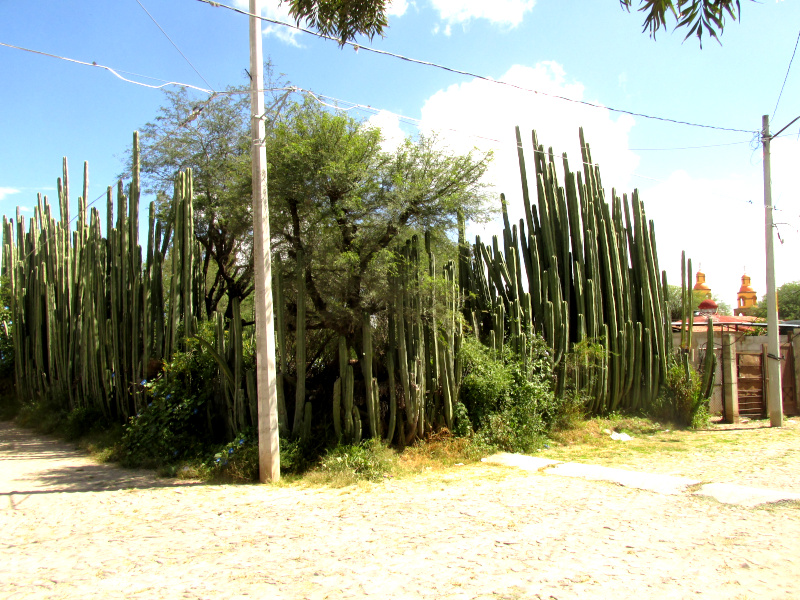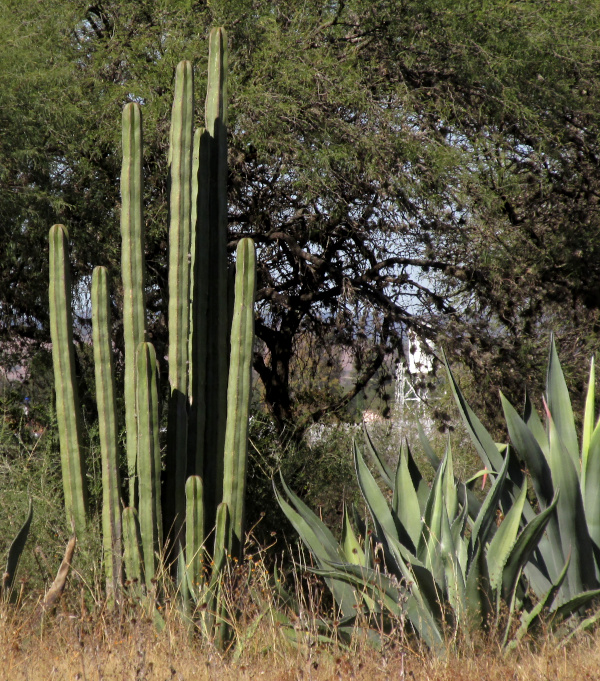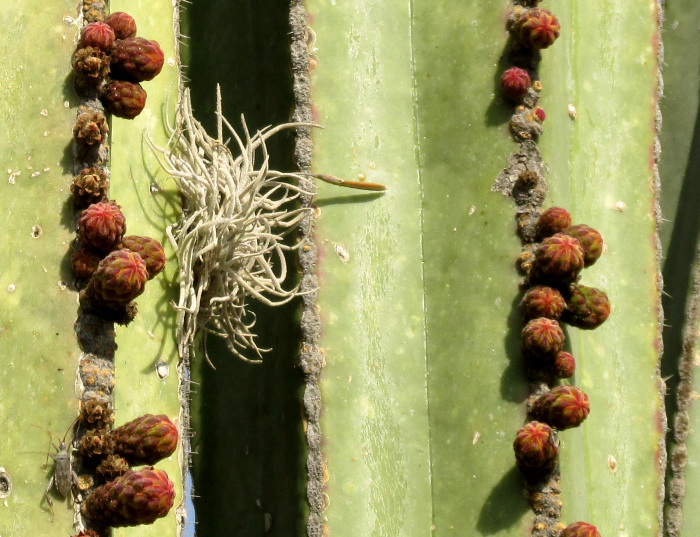Excerpts from Jim Conrad's
Naturalist Newsletter
entry from November 21, 2021, issued from near Tequisquiapan, elevation about 1,900m (6200 ft), ~N20.57°, ~ W99.89°, Querétaro state, MÉXICO
MEXICAN FENCEPOST CACTUS
In small towns in this area you're likely to see such views as shown below:

Those are cactus plants traditionally planted as walls, fences and ornamentals throughout the arid highlands from north-central to south-central Mexico plus it's planted worldwide. It's the Mexican Fencepost Cactus, LOPHOCEREUS MARGINATUS. The species is native and endemic to Querétaro and surrounding states, south to Oaxaca. So far I've not seen any individual that struck me as definitely not-planted, though sometimes you see them standing alone, as shown below next to a Maguey. The Maguey definitely is planted, so probably the cactus, too.

At first it's possible to confuse the species with others sending up tall columns and giving the impression of never branching, or branching very seldom. In fact, Mexican Fenceposts do branch, close to the bottom, as shown below:

There you see branching at the very base, plus the green, ribbed item is a sprouting branch. There's another commonly occurring species that from a distance looks just like the Mexican Fencepost Cactus, but up close you see that it branches up to shoulder high. That's Isolatocereus dumortieri, the Candelabra Cactus. Sometimes the two species hybridize.
If the manner of branching at the base doesn't convince you that you have a Mexican Fencepost Cactus, then the spines along its vertical column ridges can help, as shown below:

Unusual is that the groupings, the "areoles" -- of which three appear in the picture -- are so close together that they touch, or almost touch. Normally on other species areoles are more separated.
At this time of year I find neither flowers nor fruits on any of them. However, they're said to blossom from February to May, and that's something to look forward to.
entry from January 30, 2021, issued from near Tequisquiapan, elevation about 1,900m (6200 ft), ~N20.57°, ~ W99.89°, Querétaro state, MÉXICO
FENCEPOSTS FLOWERING
Nowadays most Fencepost Cactuses bear no flower buds or flowers, but some have a few buds but no flowers, and a very few display hundreds of buds and a few of the season's first blossoms. The picture below shows how some cacti are loaded with buds:

The gray item in the center is a bromeliad. A Fencepost flower is shown below:

Here's the same flower from the side:

There's another columnar cactus in this area even larger than the Fencepost, and possibly can be confused with the Fencepost, Isolatocereus dumortieri, the Candelabra Cactus. Its flowers are similar to the Fencepost's, but tend to form at the very top of the column, while the Fencepost's flowers occur from top to fairly low. Also, mature Candelabra plants tend to branch more, often with several branches arising from a a single thick trunk. The spines are a bit different, too. The confusion arises because the Fencepost can branch up to about head-high, too, as shown below:
